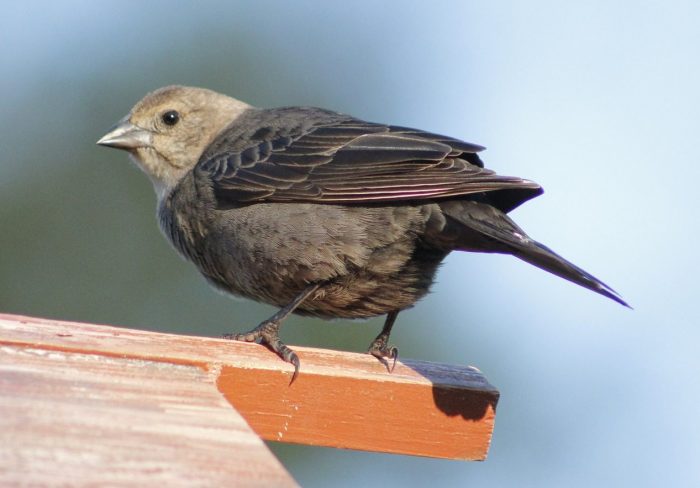By Daniel Dunaief

A huge fan of our avian neighbors, I have collected numerous anecdotes during my travels on Long Island and around the world. As we delve deeper into the spring, I’d like to share a few.
The brood parasite: Many years ago, OK, decades, I did some research on the brown-headed cowbird. This bird, whose scientific name is Molothrus ater, which means “black vagabond,” shares a lifestyle with the cuckoo. You see, the cowbird, which spends considerable time eating food near farms or settled lands, doesn’t build nests. It lays its eggs in the nests of other birds and contributes nothing to the parenting of its young.
When I was in college, I wondered how these birds knew they were cowbirds and didn’t form attachments to the numerous other species who unwittingly contribute to its success. Their hosts raise these aggressive young that sometimes outcompete their own chicks for food. Speaking with people who lived in Mammoth Lakes, California, where I performed my research, I met several people who were in their early 20s, who listened attentively to the story of my research. When I finished, one of them smiled and said, “Wow, what terrible parents. They must only live in California, right?”
The beak smackers: When I attended Gelinas Junior High School, I learned about the Galapagos Islands. I couldn’t wait to visit a place where sea lions barely budged when people walked near them. I finally traveled to these wonderful islands, made famous by Charles Darwin’s trip where he posited the theory of evolution. As I hiked with my family on a tour, our guide stopped and told us to listen. Smacking sounds, as if people were sword fighting with whiffle ball bats, came from just over a ridge. When we reached the top, we saw albatrosses engaged in extended beak smacking.
Once pairs of these white birds finished their ritualistic and individualized pattern, they started again. Closing my eyes, I could imagine the rhythm of several of these courtship routines becoming the percussion section of a song.
Seeing red: When I studied birds in college, I recalled hearing about the dominance hierarchies of the red-winged blackbird, which occupies marshy areas all around Long Island. With red stripes on their shoulders, these birds are also distinctive for their loud and extended squeaks. The size of the red color reflects the dominance of the birds. Without the bright red indicating the equivalent of a social rank, even the most dominant bird loses his status and preferred spot in a habitat.
Foul play: The black cormorants, which sit low in the water, are excellent divers. They are not, however, particularly well-suited for their watery lifestyle. Their feathers are not waterproof, the way a duck’s are. After they get sufficiently waterlogged, they stand on docks or pilings with their wings outstretched, as if they were holding their feathers on a drying line. They use the wind to dry themselves out. It seems especially cruel and maladaptive for a bird that lives in the water to endure extended periods of being waterlogged.
You want a coke with that? My family was enjoying a meal in Miami after a morning in the sun. Sitting outside, where we had an unobstructed view of the beach and where the wind provided welcome relief from the hot sun, we ordered burgers and fries. I picked up a French fry and lifted it near my head to make a point. Accustomed to human patterns, a seagull saw the opening, grabbed the fry without touching my hand, and flew off to consume his prize.





